This post may contain affiliate links. Please read our disclosure policy.
A flavorful recipe for stuffed grape leaves (dolmas), filled with rice and fresh veggies, and simmered in zesty lemon water. Follow my easy steps and watch the video to quickly master the art of making dolmas!
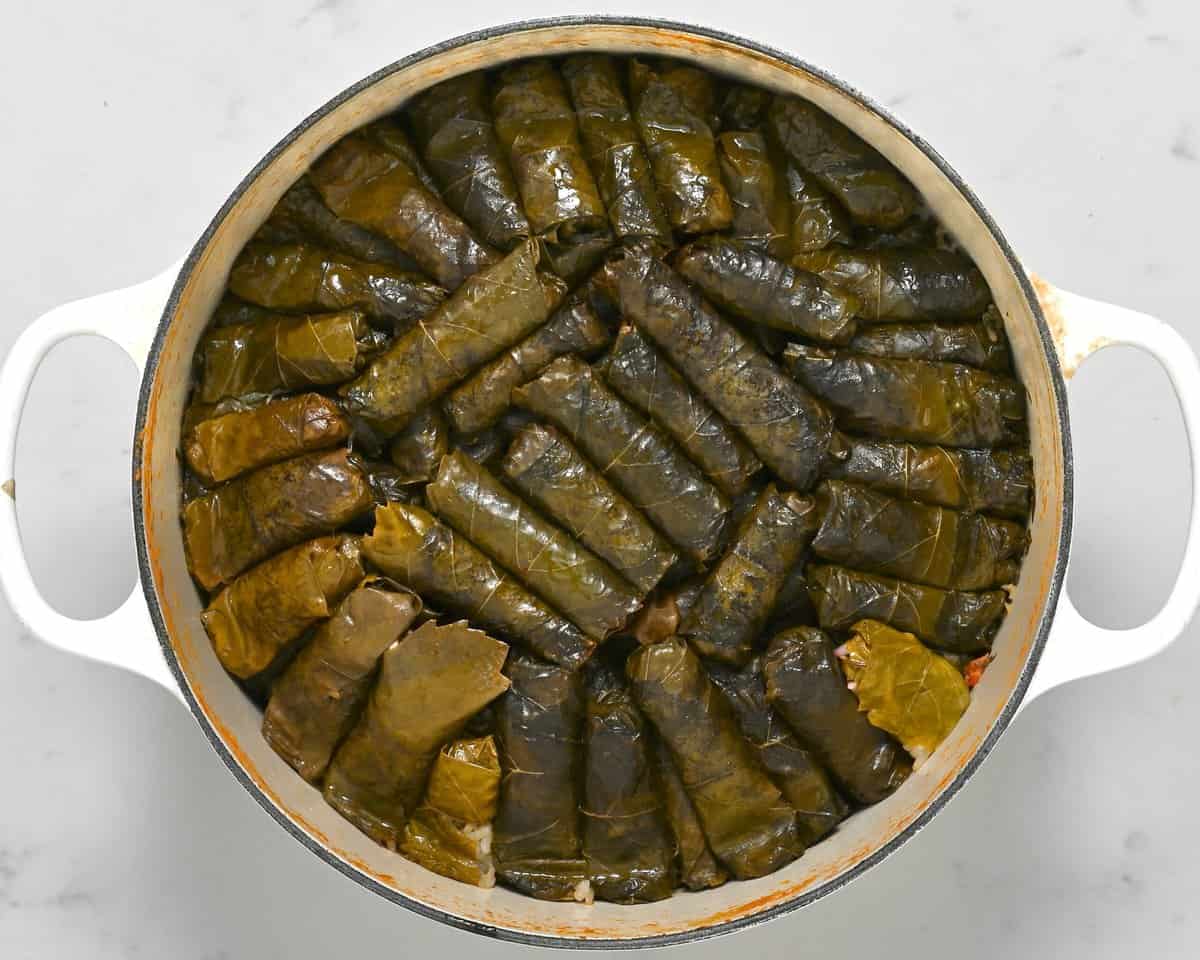
I finally tried making my own stuffed grape leaves and it was way easier than I thought! I grew up watching my family spend ages making them and thought they’d be hard to do. But they’re pretty simple – just not a quick thing. You can make a big batch at once and freeze the leftovers for later. So, this one-time cooking can sort you out for weeks or even months. Plus, these grape leaves are a great snack, part of a bigger meal, or even a main dish, and they’re all vegetarian and filling too.
Want to save this recipe?
Recipe video tutorial
What are dolmas: stuffed grape leaves?
The term “dolma” comes from the Turkish word “dolmak,” which means “to fill” or refers to a “stuffed thing.” It describes a variety of stuffed dishes enjoyed across different cultures, from grape leaves to stuffed cabbage, stuffed bell peppers, or even stuffed tomatoes. Some dolmas contain meat, while others are vegetarian, all cooked in unique sauces.
In Lebanon, we often refer to them as Warak Enab (vine grape leaves). As a Lebanese woman, I’ve grown up immersed in the tradition of making them. My favorite version is the vegetarian stuffed grape leaves. In this recipe, the grape leaves are filled with a hearty mix of rice, tomatoes, and loads of fresh herbs such as parsley, onion, and mint. We season them with olive oil, salt, and pepper. Then, they are slowly simmered in a vibrant lemon broth, wrapping up a recipe that’s not only delicious but also a piece of my family’s heritage.
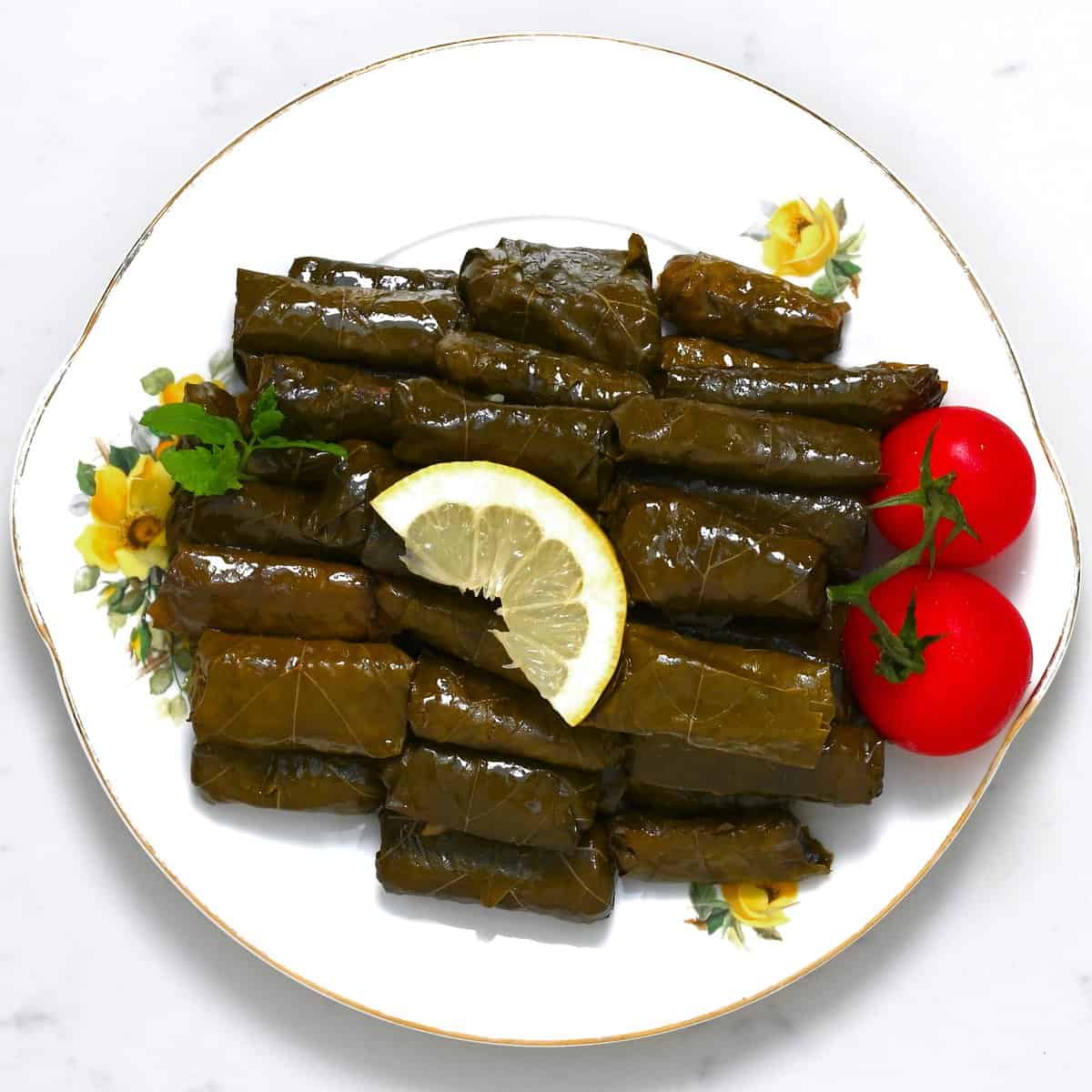
Ingredients
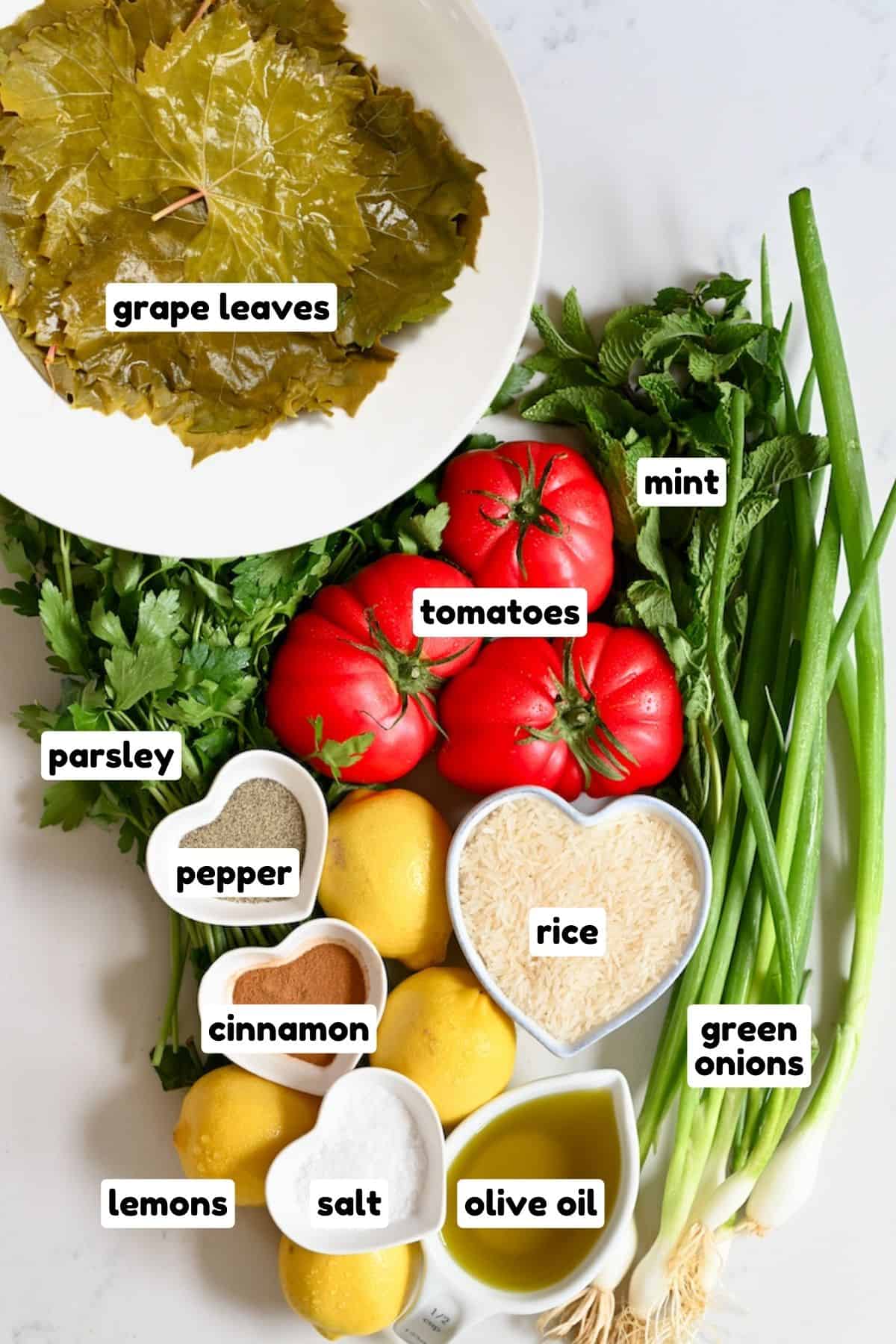
- Vine/grape leaves: Fresh or preserved (canned/jarred)
- Rice: Use long-grain rice
- Vegetables: Tomatoes, onion
- Fresh herbs: Mint and parsley
- Seasoning: Olive oil, lemon juice, salt, pepper, and cinnamon
- Water
- Potato: To lay on the bottom of the pot. You could also use any broken/unused vine leaves or sliced tomatoes too.
How to make dolmas
Making these dolmas is quite straightforward, probably easier than you’d think, but you’ll need a bit of patience. The whole process involves four main steps: getting the grape leaves ready, making the stuffing, rolling the dolmas, and then cooking them.
Step 1: Prepare the Grape Leaves
For this recipe, you can use either fresh or preserved grape leaves. If using preserved, simply rinse and drain them; they are ready to use.
For fresh leaves, wash and blanch them in boiling water for 2-3 minutes until they soften and turn a lighter, olive-green color, then let them cool in a colander.
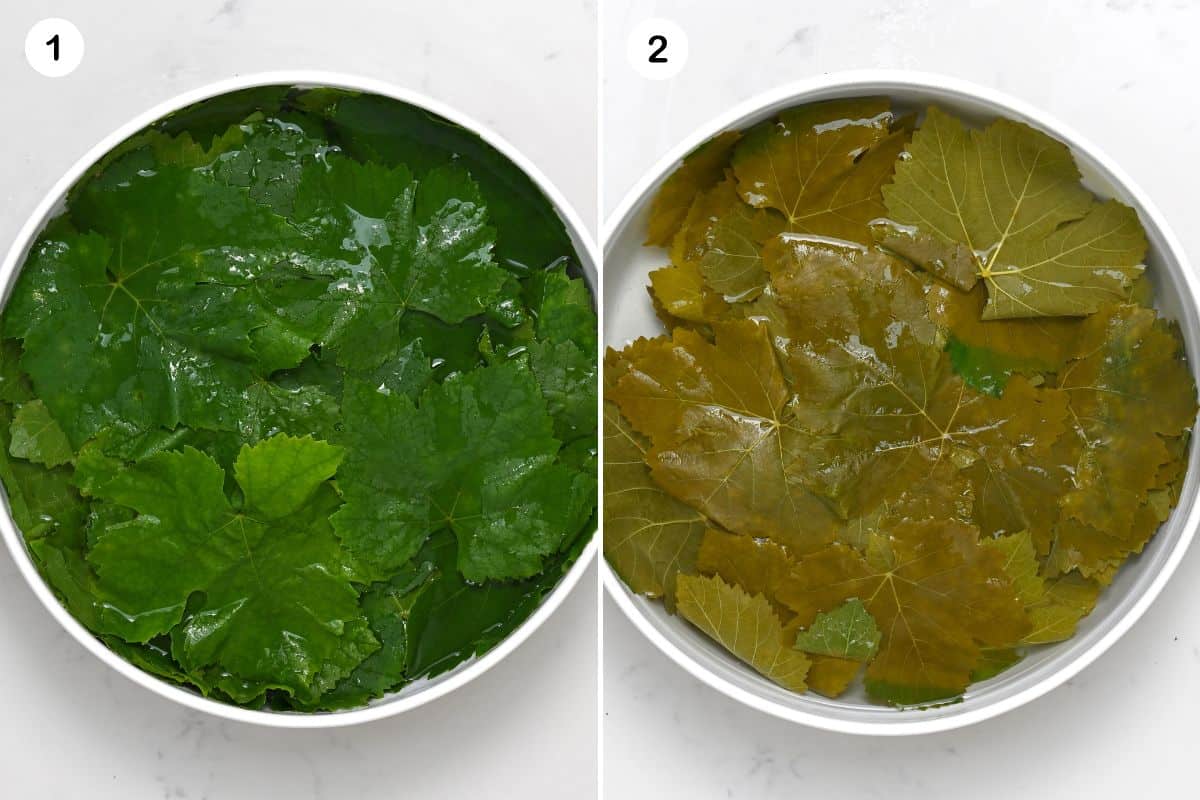
Step 2: Prepare the Stuffing
Rinse the rice thoroughly until the water runs clear, typically after 3-4 rinses, to remove excess starch and prevent it from becoming gummy. Then, allow it to drain.
Finely chop the tomatoes, mint, parsley, onion, and, if you like a bit of heat, red pepper. Place them in a large bowl. Then, add the rice, season with salt and pepper, and drizzle ¼ cup of olive oil over it. Mix everything thoroughly.
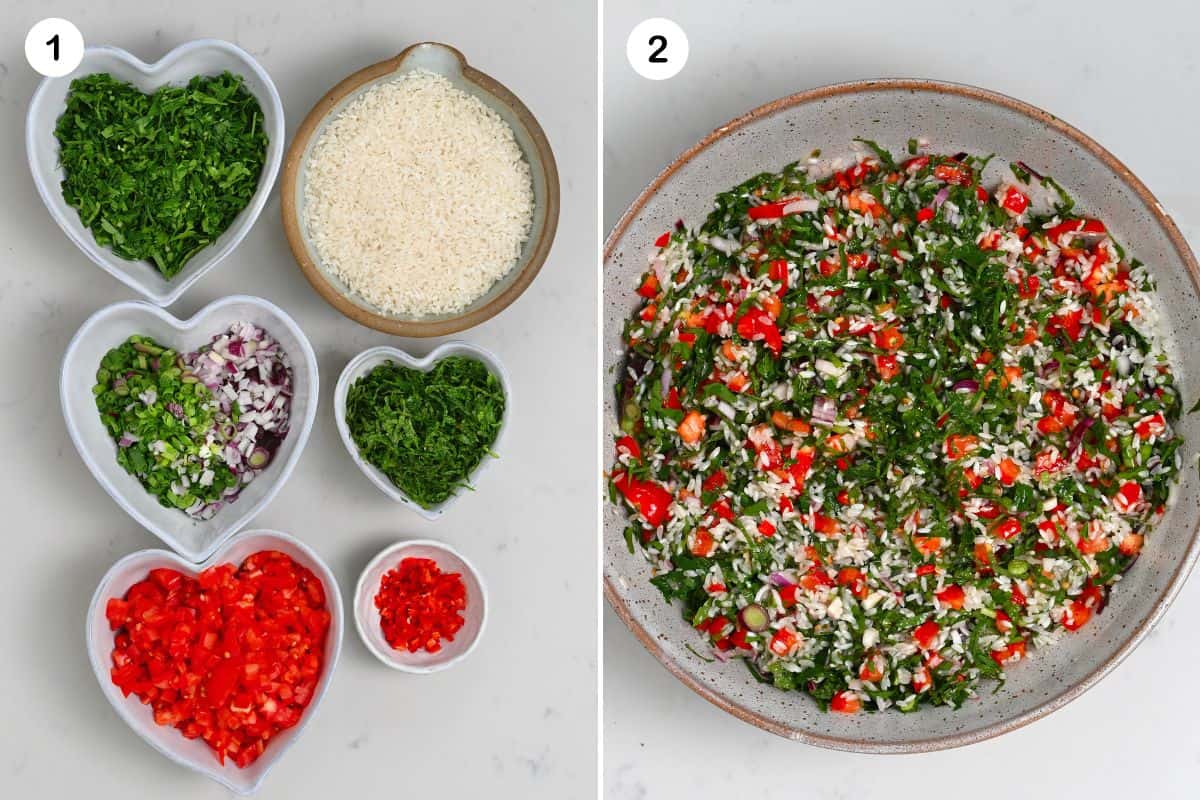
Step 3: Stuff and Roll the Grape Leaves
Start by preparing your cooking pot to arrange the stuffed grape leaves directly as you go. Lightly oil the pot, then arrange a layer of tomato slices topped with potato slices at the bottom to prevent the grape leaves from burning on the bottom of the pot.
Then, remove any large stems from the grape leaves. Place each leaf with the shiny side facing down on a clean surface. Spoon one teaspoon of the stuffing in the middle and near where the stem was, being careful not to overfill since the rice expands when cooked.
Fold in the sides, then roll up the leaf, tucking in the left and right sides as you go, similar to rolling a spring roll. Roll tightly, while still allowing space for the rice to expand as it cooks (watch my video to see how I did it).
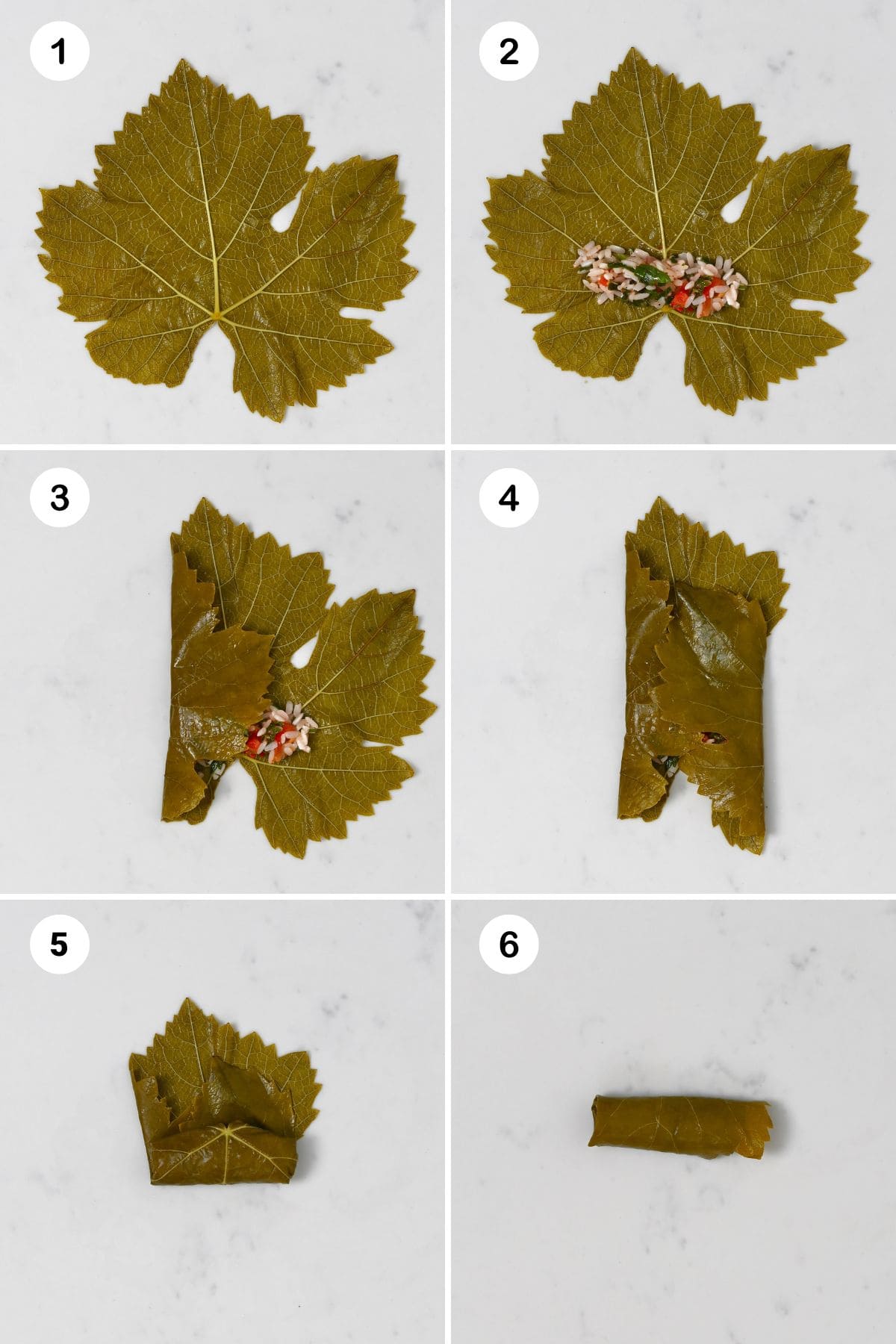
If you can manage to get your family in on the task, then it’ll go by quickly. And it only takes a few leaves to build your method and get in the groove.
Step 4: Assemble and Cook
Arrange the stuffed grape leaves in the pot, seam side down, packing them tightly to prevent unraveling during cooking.
In a bowl or jug, mix water, lemon juice, and the remaining olive oil, then pour this mixture over the stuffed grape leaves to partially cover them.
Place an inverted plate or pan on top of the grape leaves in the pot and put something heavy on the plate. Then, cook them on medium heat for 30 minutes until they absorb most of the liquid.
After that, remove the plate, cover the pot again, and continue cooking on low heat for another 30 minutes or until fully cooked.
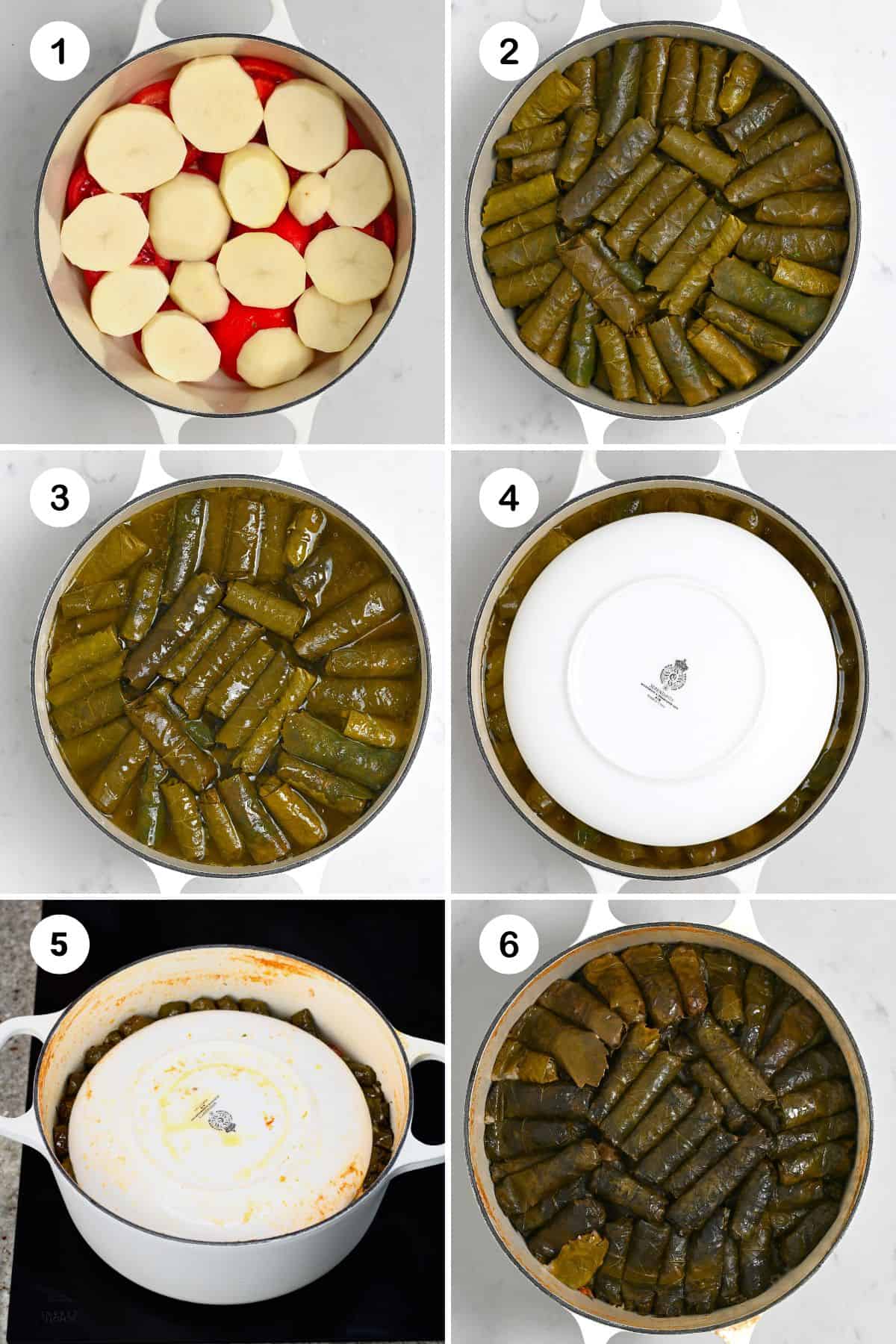
Once cooked, remove the pot from the heat. Let the grape leaves ‘rest’ uncovered for 20-30 minutes before transferring them to a serving plate.
Tips for making grape leaves recipe
- Rinse the Rice: Make sure to wash the rice well before using it. This gets rid of the extra starch that can make the rice sticky.
- Don’t Overstuff: Be careful not to put too much filling in the grape leaves. The rice gets bigger as it cooks, and if there’s too much, the leaves might tear or the filling might spill out.
- Roll Them Right: Roll the leaves tightly enough so they don’t come apart while cooking, but not so tight that there’s no room for the rice to expand.
- Secure the Rolls: Lay the grape leaves rolls seam-side down in the pot to prevent them from unwrapping. Place a small inverted plate on top to weigh them down and stop them from floating. Once they have absorbed most of the liquid, remove the plate.
- Let Them Rest: After cooking, give the stuffed grape leaves 20 to 30 minutes to cool down and firm up before serving. This waiting time improves both their taste and texture.
Serving suggestions
Stuffed grape leaves are super versatile. You can enjoy them as snacks or main meals. Often, Lebanese restaurants include them on mezze platters with various other delicious dishes:
- Fatayer (Lebanese spinach pies)
- Lebanese Spicy Potatoes Batata Harra
- Tabouli Salad
- Baba Ganoush Dip and Hummus
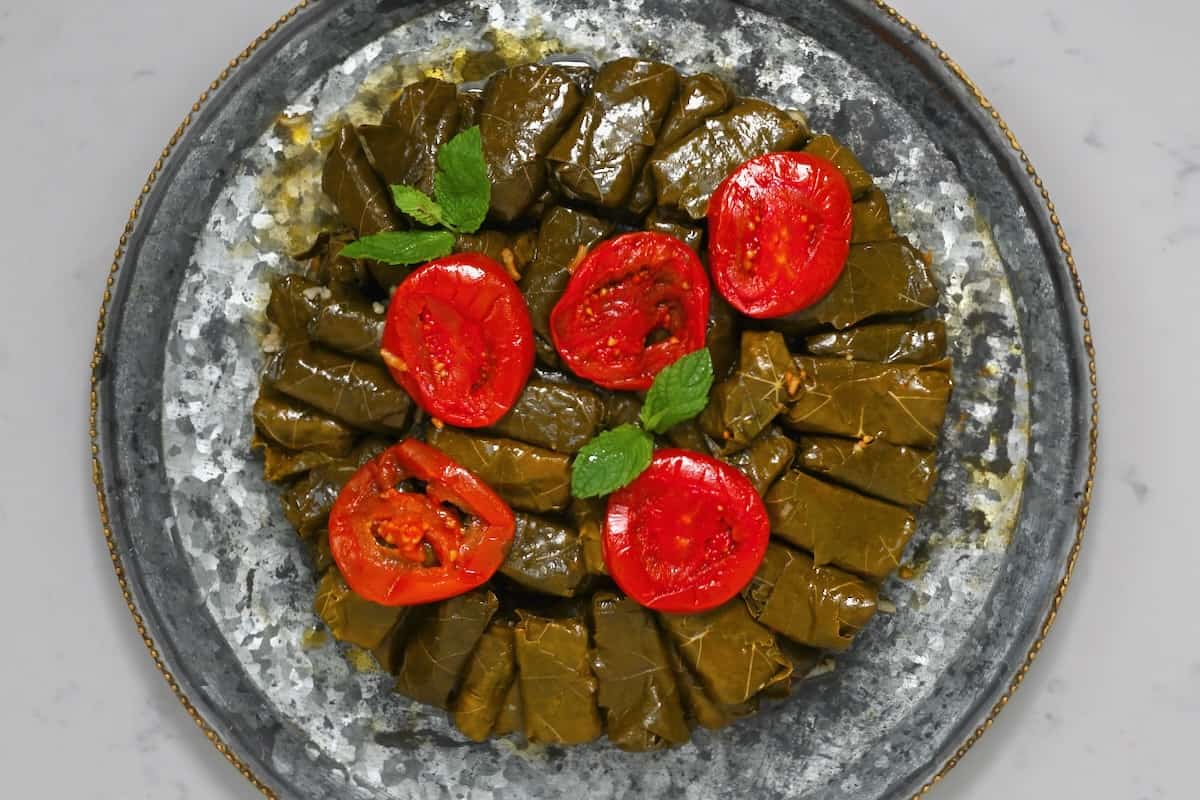
To make ahead
- Store cooked stuffed grape leaves in the fridge for 5-7 days in an airtight container. For longer storage, freeze them; they can last up to three months.
- You can prepare, roll, and arrange the grape leaves the evening before you intend to cook them. Just keep them in the fridge until cooking time. You can also freeze any uncooked rolls; they’ll stay fresh for up to three months in the freezer.
More stuffed vegetable recipes
If you try this dolmas recipe, let me know how it goes in the comments below. I’d appreciate a recipe card rating and would love to see your recipe recreations – tag me on Instagram @Alphafoodie!
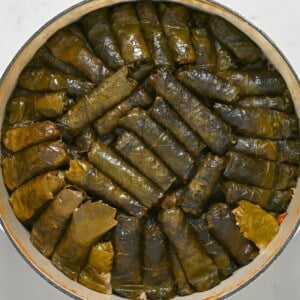
Best Stuffed Grape Leaves (Dolmas)
Ingredients
- 80 grape leaves either fresh grape leaves or preserved grape leaves in jars
- 1 cup rice long grain
- 2 tomatoes medium size
- 0.7 oz fresh mint leaves (or 1/2 cup finely chopped)
- 3.5 oz fresh parsley 1 bunch (or 1 cup finely chopped )
- 1 bunch green onions (or 1 cup finely chopped)
- 1/2 red pepper optional (1/4 cup finely chopped)
- salt to taste
- 1 tsp black pepper
- ½ cup olive oil
- 1/2 cup lemon juice from 2 large lemons
- 1/2 cup water
- sliced tomatoes and potatoes (to form a protective layer at the bottom of the pot)
Instructions
Prepare the grape leaves
- If using fresh grape leaves, wash very well, and blanch with boiling water for 1-3 minutes to soften, then rinse and allow to cool completely.If using preserved grape leaves, rinse them under cold water to wash away excess salt and then let them drain; after that, they’re ready for your recipe.
Make the stuffing
- Rinse the rice thoroughly until the water is clear. Usually, it takes 3-4 rinses. This will remove the starch.
- Finely chop the tomatoes, mint, parsley, onion, and red pepper (if using) then transfer them to a large bowl.
- Add the rice to the bowl with the chopped vegetables. Season the mixture with salt and pepper, and drizzle with ¼ cup of olive oil. Mix everything to combine thoroughly.
Stuff and roll the grape leaves
- Before you start rolling, prepare your cooking pot to arrange the stuffed grape leaves directly as you go. Lightly coat the bottom with olive oil. Then, lay a protective layer of sliced tomatoes and potatoes.
- Trim off all stems from the leaves. Lay each leaf shiny side down on a clean surface. Add one teaspoon of the stuffing to the center of each leaf, being careful not to overfill as the rice will expand during cooking.
- Fold in the sides of the leaf over the filling, then roll upwards tightly, ensuring the filling is securely enclosed. However, allow a bit of room for the filling to expand. Bring the two sides in and then roll to close – similarly to rolling spring rolls. (Watch my video to see how I did it,)If you can manage to get your family in on the task, then it'll go by quickly. And it only takes a few leaves to build your method and get in the groove.
Assemble and cook
- Arrange the stuffed grape leaves in the pot, seam side down. Make sure they are tightly packed into the pan. This will stop them from moving and falling apart while cooking.
- Mix the water, lemon juice, and the remaining olive oil and pour on top of the stuffed grape leaves to partially cover them.
- Put a flipped-over plate on top in your pot and place something heavy on top. Cook on medium heat for 30 minutes, with the lid on, until most of the water has been soaked up.
- You can remove the plate once the stuffed grape leaves have soaked up the majority of the water, and then continue to cook or leave it on for the entirety of the cooking.
- Take off the plate, cover the pot with the lid, and simmer on low heat for an additional 30 minutes until they're done.
- After cooking, take the pot off the stove and let the grape leaves sit uncovered for 20-30 minutes to settle before placing them on a serving dish.
Video
Notes
Nutrition
Nutrition information is automatically calculated, so should only be used as an approximation.



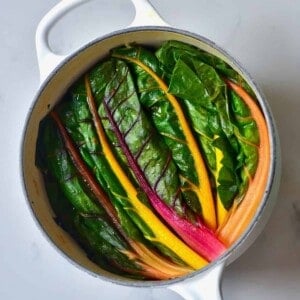









Looks so good!
Thank you, Barbara. 🙂
I’m also Lebanese and LOVE grape leaves. I’ve never tried them with this stuffing recipe, but it looks amazing and will definitely be making this!
Thank you so much for your comment, Maya.
I hope you tried this recipe and liked it 🙂
Love your devotion
Thank you so much, Tota 🙂
I love it! Gonna try it out asap! My mom really wanted to make it for a long time! In Serbia people usually make ‘Sarma’ (i still havent tried veggie version of it (so if you have one for this too please share))
Hi Jovan,
I hope you gave this recipe a try. These vegetarian dolma are probably very similar to the sarma. I hope you’ll like them.
Looks amazing and so shiny!!
Thanks, Annie. I hope you try this recipe 🙂
Never thought this dish would be something i would try but here you go- changing my mind as always! Love the detailing of your work and the aesthetic appeal of your content!
Thank you so much for your comment, Neha. I hope you tried the recipe 🙂
Lovely recipe and lots of useful tips!
Thank you, Ray. I hope you give this recipe a try 🙂
I love this recipe. Can’t wait to try it. Looks delicious
I hope you give this recipe a try, Shanea. Let me know how it goes 🙂
These grape leaves are
I love your recipes. I enjoy how esthetic your cooling is. I also love love looove colorful foods and you always make me happy with all the colors you use in your food.